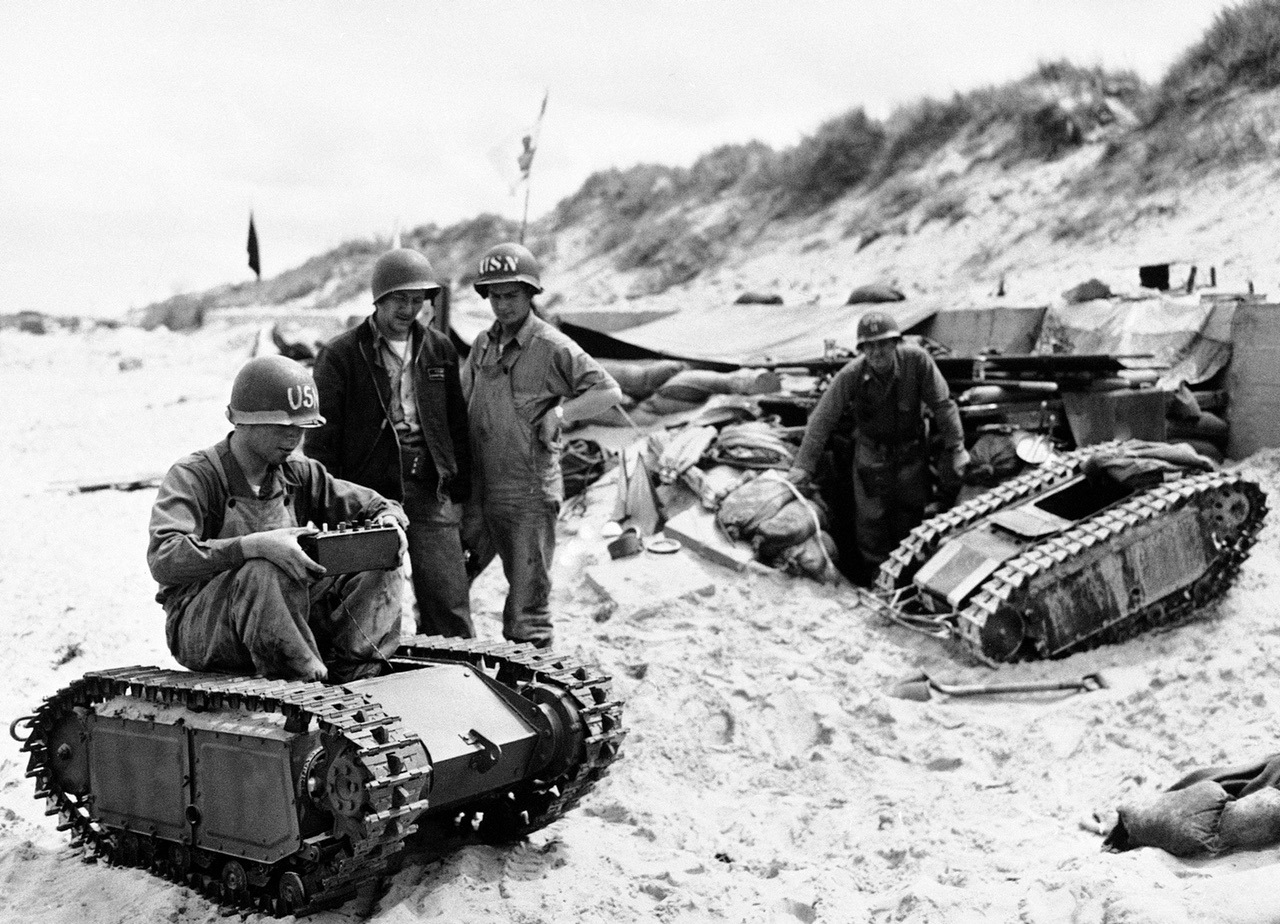This Japanese-made, remote-controlled tank got tech nerds all excited in 1931. But it wasn’t just because they saw a new toy. Tech-minded folk of the early 1930s also saw a utopian solution to war. A solution where, ideally, fewer humans would have to die.
Cover of the April 1931 issue of Radio-Craft magazine showing off the radio-controlled tank
Ideas about remote-controlled warfare have been around for over a century. And here in the 2010s we’re acutely aware that wars can be fought from halfway around the world. If our generation is remembered for anything, it might be for our introduction of “drone” into the international lexicon. But the thing that we so often forget is that the people who built remote-controlled war machines in the interwar period (between the end of WWI and the beginning of WWII) thought they were doing humanity a favour.
There are countless visions of radio-controlled tanks, unmanned aerial vehicles, and even gigantic robot fighters from the early 20th century. But the thing that might be most shocking to readers here in the early 21st century is that these empty vehicles were all supposed to be fighting amongst themselves.
The gigantic robots of 1934 were explicitly envisioned to fight “our battles” and whatever robot won, that nation would be declared the victor.

Two 304.80m-tall robots fighting in the future (April 29, 1934 issue of the Fresno Bee newspaper)
You also see this in the visions of robot tanks. From the April 1931 issue of Radio-Craft magazine (emphasis mine):
Writers of war stories, peering into the future, predict an approaching era when fighting will be done by machinery under remote control. Guns automatically operated will fire from deserted fortifications and from tanks which contain no living operators. Aeroplanes without human pilots will observe positions through televisors, and drop projectiles guided from a post at headquarters, many miles away. The casualties will be solely among robots of steel and copper, whose orders are conveyed to them by radio, or other subtle signalling methods. Such is the picture which is painted upon the drop curtain which conceals the next war — if it be true that war has not been abolished along with the dips in the business cycle.
Of course, that bit about abolishing dips in the business cycle gives us a hint that perhaps the authors of this article didn’t believe wholeheartedly in the utopian promises of unmanned war.

The article continued by explaining that the robot tank had recently been demonstrated in Tokyo, Japan, and that it’s clearly just the start of something much bigger.
A picture which appeared recently in one of our English contemporaries is reproduced here; the original, it is said, was taken at a public demonstration in Tokio of a tank which was operated entirely by radio from the post in the foreground. The tank went through numerous maneuvers, under full command of its operators, to the enthusiasm of a great crowd of spectators. While the picture does not seem to be of an official type, it is evidently genuine; the tank itself seems rather small and not too war-like.
When World War II would rear its ugly head, robot tanks would indeed become a reality. But unfortunately they were the exclusive domain of the Nazis. The Germans designed two different remote-controlled tanks that carried explosives: The Borgward IV and the Goliath.
Neither were wireless, so their range was thankfully limited to however far the remote’s wire would take them. Both were packed with large payloads and were designed to explode on impact with their target of Allied troops.

US Navy men in France disassemble Nazi “beetles” that were armed with explosives on June 19, 1944 (Associated Press)
Needless to say, remote-controlled warfare has not led to a utopian world of robotic fighting wherein nations simply let the machines battle it out and declare a winner at the end. That seems about as likely as it did in 1931, along with abolishing “dips in the business cycle.”
